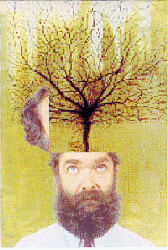
| Professor Hibbert is recovering after careful surgery to remove an ingrowing fractal. Doctors say that this will not affect his ability to live a normal productive life.
Email: b.hibbert@unsw.edu.au
|
History
One of the first succesful attempts to electrodeposit a fractal was by Matsushita et al. who sandwiched a solution of copper sufate or zinc sulfate between glass plates and applied a voltage beween a central cathode wire and an outer ring anode. Beautiful tree-like structures resulted, the shapes of which depended on the applied voltage and the concentration of electrolyte. A linear geometry can also be adopted with growth between parallel electrodes.
We became interested in preserving the growths and discovered that if an ordinary filter paper was sandwiched in the gap between the plates the fractal grew as before, but also became embedded in the filter paper. Now the growth could be removed, the filter paper washed and dried and a fractal preserved for posterity.
How to grow an electrodeposited fractal
Apparatus:
- DC power supply (up to 20V, 100 mA)
- Solution of copper sulfate in sulfuric acid (about 100 mL 0f 0.1 to 1 M copper, 0.1 to 1 M acid)
- 11 cm Whatman 541 filter paper
- Annulus of copper 11 cm OD, 10 cm ID
- Copper wire (1 mm OD)
- Paper clips, glass plate, clamps and stands, crocodile clips etc
Method
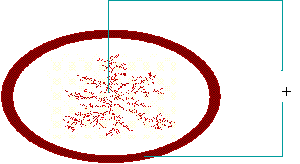
- Clip the filter paper to the copper annulus
- Soak the filter paper in the acidified copper sulfate solution (Care - solution is corrosive!)
- Shake off any spare solution (Care - solution is corrosive!)
- Lay the filter paper/electrode flat on a glass plate (or support on the annulus between two or three coffee cups)
- Position the tip of the copper wire in the centre of the filter paper
- Conect the wire to the negative terminal of the power supply (it becomes the cathode), and the copper annulus to the positive terminal (it becomes the anode)
- Switch on and watch it grow. Try 10 V to start with.
Notes:
The most open and DLA-like growths are found at the lowest voltage. At 1 V the growth takes several hours and so the paper must be kept from drying out. Try making a reservoir with strips of torn up filter paper feeding up to a supported filter-paper cell.
Metals you can try are:
- Copper from copper sulfate
- Zinc from zinc sulfate
- Silver from silver nitrate (protect from light)
Pictures - Fractal growths in the electron microscope
Copper in filter paper |
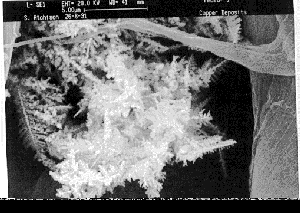 |
Copper in filter paper |
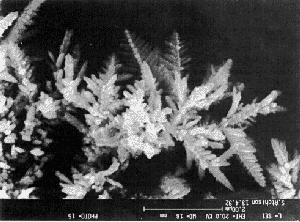 |
Copper in glass fibre | 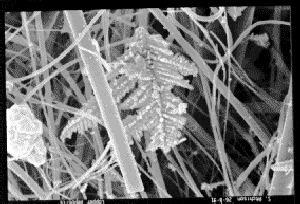 |
More pictures
Circular growth showing the 'Hecker effect' | 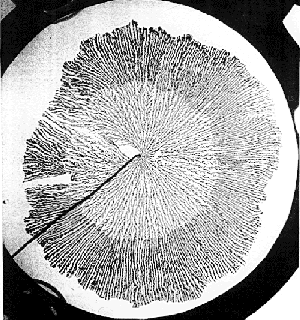 |
A silver fractal | 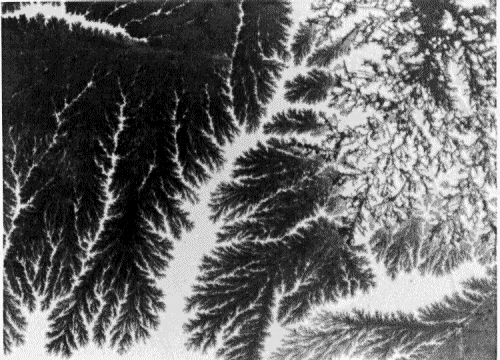 |

References
- M. Matsushita, M. Sano, Y. Hayakawa, H. Honjo & Y. Swada, Phys. Rev. Lett., 53, 286-9 (1984)
- D. B. Hibbert and J. R. Melrose, Phys. Rev. A38, 1036 (1988)
- S.N. Atchison, R.P. Burford and D. B. Hibbert, J. Electroanalytical Chem., 371, 137 (1994)




